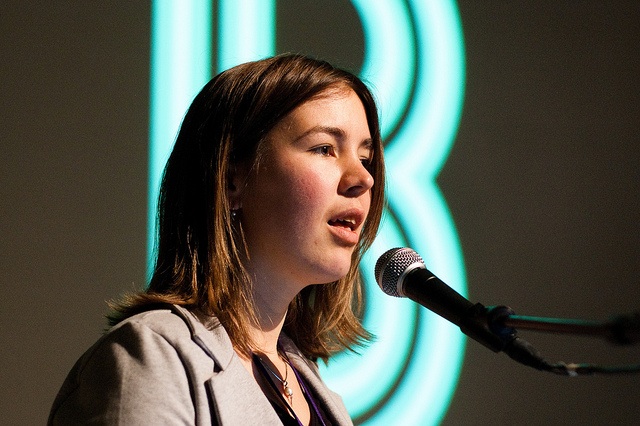First things first: ArtTube is not an art collection database, and is not an archive; it is an educational platform bringing videos about art and design. With this remark Catrien Schreuder opened her presentation on Museum Boijmans van Beningen‘s video platform, ArtTube. This amidst a panel, “It’s Not a Dead Collection, it’s a Dynamic Database,” where indeed art collections and archives predominated.
Though her presentation in itself didn’t shed any particular new concepts or ideas to the field of online video platforms, things did get interesting once the question and answer started. In her presentation Schreuder had commented on how the interactive parts of their website weren’t being used much, but rather were filled with spam. This triggered questions from the audience on the possibility that they were gatekeeping too much (limiting the videos on ArtTube mainly to content produced by the museum and its authorized experts). Furthermore, a member from the audience asked: “Isn’t a new platform’s worst nightmare no visitors, no content, no comments and no participation instead of spam?” After all, the title of this panel put the emphasis on the dynamism of video collections online, a dynamism that is often associated with user participation, connectivity and interactivity.
Schreuder replied to this by emphasizing one of the most priviledged concepts of the panel: context. Since videos are so easily shared online what makes their particular platform special and significant was precisely the context they are able to provide as an art institution, as an online platform with videos on art from a very specific kind of source, a museum. She remarked that they are a knowledge institution, and though they do want to connect with the public “we want to share our knowledge as well as connect with the public,” and as a museum “we are expected to offer information.”
Sandra Fouconnier from the Netherlands Media Arts Institute (NIMK) seemed to agree when she observed on a similar lack of user participation in her institution’s platform that “the content that we offer is quite specific, it is not something that people see everyday . . . first they just want to learn about it.” Earlier in the panel, Arjon Dunnewind from Impakt Festival, had remarked that with regards to comments in their curated video art platform it seemed logical to first privilege experts and then slowly open up to the “average user.”
Schreuder also mentioned that there are different kinds of environments and types of interacting and sharing. In their case, as a museum, “our share function is a more likely way of participation,” than for example leaving comments or discussing the videos in ArtTube itself. This, she hypothesized, probably happens in the users “own environment.”
“Our website is not the place where people go to discuss our videos, they go there to get the information” she concluded.
A bit more on ArtTube
The idea of creating something like ArtTube started around 2008 with the Museum Boijmans van Beningen’s experience that video is a very popular media to inform people. The museum had been using video as one of the ways to complement its exhibitions and better inform the visitors about what they where seeing. ArtTube started with the idea that those videos should be online too, not just on YouTube but on the museum’s own website since, like most of the speakers in this panel, Schreuder emphasized the importance of context with regards to video sharing platforms.
As part of this effort of providing context the videos in ArtTube has notes with details and links to things being talked about in the video. Furthermore, the museum’s website also offers other interactive platforms such as ALMA, an online database for exploring the relationship between objects and their depiction in art, and MijnBoijman.nl where the user can create its own exhibitions from the museum’s available collections.
Even though originally, the videos in ArtTube were not made for an online platform but rather for visitors to the museum (which may differ considerably from the kind of audience that’ll use an online video platform), eventually the museum started to produce more varied types of videos. As Schreuder said, they didn’t want a dead collection “with boring talking heads.” And so they started making small documentaries of people working in the museum, timetravelling series on the links within the museum’s different collections, interviews with artists and videos of events happening in the museums.
You can find Schreuder’s presentation here.



